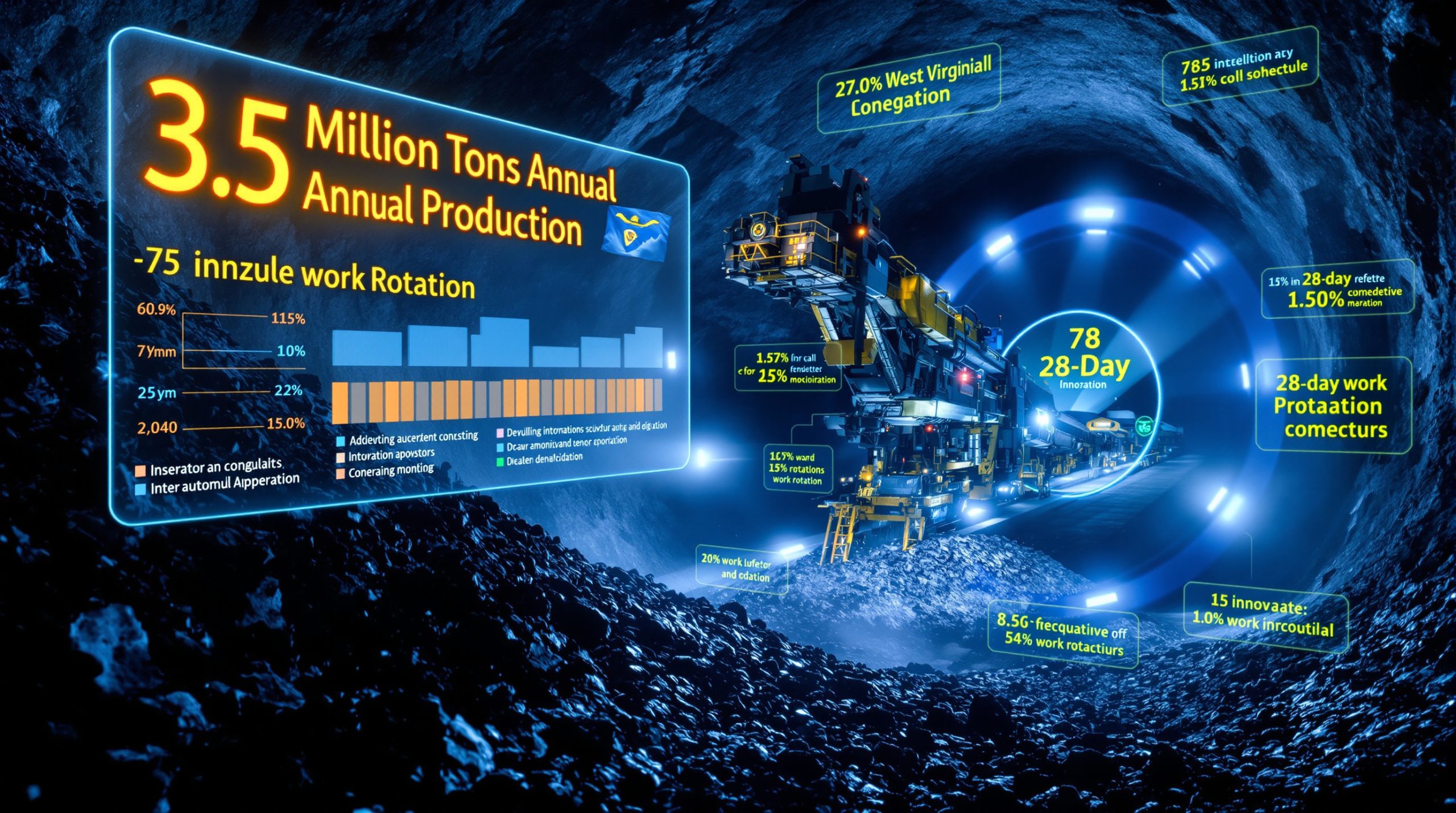Understanding Negative Copper Benchmarks: Market Dynamics and Industry Implications
In an unprecedented market shift, copper concentrate treatment and refining charges (TC/RCs) have fallen below zero, transforming traditional industry dynamics. This negative copper benchmark phenomenon signals a fundamental restructuring of the copper supply chain that affects miners, smelters, traders, and downstream industries worldwide. With implications for pricing mechanisms, supply security, and operational viability, negative copper benchmarks represent one of the most significant developments in metals markets this decade.
What Are Negative Copper Benchmarks and Why Do They Matter?
Negative copper benchmarks represent a complete inversion of traditional market dynamics where smelters now effectively pay miners for raw materials instead of charging processing fees. This extraordinary situation has emerged from severe supply-demand imbalances that have upended decades-old industry practices.
The benchmark system serves as a reference point for global contracts, with the 2025 benchmark at $21.25 per tonne—a steep decline from the $80 per tonne level just two years prior. Current copper price prediction insights suggest potential settlement between negative $15 per tonne to positive single digits, highlighting unprecedented market uncertainty.
For miners, negative benchmarks translate to premium pricing for concentrates, while for smelters, they represent existential financial challenges. The significance extends beyond immediate financial impacts to question the viability of the entire global pricing structure for copper raw materials.
How Did Copper TC/RCs Turn Negative?
The copper market's unprecedented reversal stems from a perfect storm of factors converging simultaneously to create extreme market tightness.
The Supply-Demand Imbalance Explained
Several interconnected developments have dramatically altered market dynamics:
-
Accelerated Smelting Capacity Expansion: China's aggressive expansion of domestic smelting capacity has created an insatiable demand for raw materials, with new facilities requiring concentrate supplies regardless of processing economics
-
Persistent Mine Supply Disruptions: Major production problems at key copper mines including Indonesia's Grasberg (mudslides), Peru's Las Bambas (strikes), Chile's El Teniente (accident aftermath), and the continued suspension of Cobre Panama operations
-
Reduced Production Growth Forecasts: The International Copper Study Group (ICSG) revised 2025 production growth projections downward from 2.3% to just 1.4%, citing "major incidents that negatively affected output at the Grasberg and Kamoa mines"
-
Structural Processing Overcapacity: Industry analysis indicates that the gap between concentrate availability and processing capacity will persist through at least 2027, suggesting negative benchmarks could become more than a temporary anomaly
The depth of this imbalance has driven spot TC/RCs into unprecedented territory, with some reported values reaching negative $45 per tonne by October 2025, fundamentally altering the economics of the entire copper value chain.
Regional Fragmentation: Is the Global Benchmark System Breaking?
The traditional unified annual benchmark system—a cornerstone of copper concentrate trading for decades—now faces existential challenges as regional interests diverge.
The Challenge to Unified Pricing
Regional responses to negative benchmark pressures reveal growing fragmentation:
| Region | Benchmark Approach | Current Market Response |
|---|---|---|
| China | Political resistance to negative settlements | Zero settlement in mid-2025 negotiations |
| Japan | Independent negotiating stance | Failed to reach mid-year agreement with Antofagasta |
| Europe | Seeking separate terms | Diverging from Chinese settlements |
| Global | Widening spot-benchmark disconnect | Benchmark increasingly viewed as "symbolic" |
Industry participants increasingly question whether a single global benchmark remains practical when:
- Spot TC indices have plummeted to negative $(65.40) per tonne as of October 2025
- Regional acid prices and downstream integration vary significantly
- Mid-year settlements between Antofagasta and Asian smelters reached $0 per tonne while Japanese smelters refused terms
- The gap between market realities and symbolic benchmark figures continues to widen
"I think the traditional benchmark system will continue to exist, but more as a symbolic reference," noted one mining industry source. "Its market influence will probably diminish over the next one to two years, because many participants are already moving away from fixed benchmark numbers in favor of spot index-linked contracts."
How Are Market Participants Adapting?
As the industry navigates this uncharted territory, both miners and smelters are implementing strategic adjustments to their commercial approaches.
Evolving Contract Strategies
Companies throughout the copper value chain are implementing innovative contract approaches:
-
Strategic Volume Allocation: Miners are carefully evaluating what percentage of production to allocate to long-term contracts versus spot sales, reducing benchmark-linked volumes
-
Index-Linked Pricing Growth: Both parties are increasingly adopting spot index-linked contracts rather than fixed benchmark pricing to better reflect market realities
-
Increased Spot Market Activity: A higher proportion of concentrate sales now move through the spot market rather than traditional contract channels
-
Contract Duration Shortening: More frequent renegotiation of terms allows adaptation to volatile market conditions
Mining companies now strategically evaluate their allocation decisions annually. "We allocate units commercially where we think we'll get the greatest benefit," explained one mining industry source, highlighting the shift toward more dynamic commercial strategies.
This commercial flexibility has become essential, with market participants describing negotiations as a "game of chicken" where smelters remain reluctant to commit to unfavorable terms, potentially waiting for spot conditions to improve or benchmark settlements.
What Does a Negative Benchmark Mean for Smelters?
The negative benchmark environment poses potentially existential challenges for smelting operations worldwide, forcing difficult decisions about continued operation.
Survival Challenges and Strategic Responses
The financial pressure on smelters has intensified:
-
Widespread Operational Losses: Many facilities now operate at significant financial losses, with the competitive dynamic described by one trader as shifting from "how to win" to "how to handle the losses for a longer time"
-
Capacity Reduction Announcements: Japan's Mitsubishi Materials announced in August 2025 plans to reduce copper concentrate processing at its Onahama Smelting and Refining business, while JX Nippon Mining & Metals implemented similar cuts in June 2025
-
Government Intervention: Australia's Mount Isa Copper Smelter received a A$600 million ($393 million) government support package to maintain operations through 2028, protecting a facility that processes up to 300,000 tonnes per year of copper cathode
-
Alternative Material Processing: Some smelters are increasing recycled material processing to maintain profitability, as announced by Mitsubishi Materials
-
Strategic Integration Benefits: Chinese smelters may avoid formal closures due to their integration into larger value chains including wire, cable, and vehicle production, with some operating under physical production targets rather than economic ones
Market sources suggest alternative financing mechanisms could emerge, including "low interest credit lines or government loans," particularly for facilities considered strategically important for downstream industries.
How Are Trading Dynamics Changing?
The trading landscape for copper concentrates is undergoing significant transformation as new participants enter and established patterns shift.
New Entrants and Widening Spreads
The trader landscape has evolved dramatically:
-
Record Counterparty Spread: Fastmarkets' bi-monthly copper concentrates counterparty spread was assessed at $42.85 per tonne on October 3, 2025, representing the widest level since $43 per tonne on June 27, 2025
-
Oil and Gas Trading Entry: Major energy trading houses including Mercuria, Vitol, and Gunvor have entered the copper concentrates market with aggressive bidding strategies
-
Medium-Sized Trader Survival Risk: Industry sources note that small and medium-sized copper concentrate traders face existential questions amid intensified competition, unable to afford high costs to secure material
-
Chinese Buyer Advantages: Chinese purchasers benefit from more competitive freight costs and improving payable terms, eliminating traditional advantages that Japanese and European smelters previously held
This intensified competitive environment has led to what one mining source described as "silly numbers" in bidding, raising questions about financial sustainability: "The space is getting more crowded. All these guys from oil and grain coming in to do concentrates to build a book, bidding silly numbers. At what point in time does this end? Someone's going to run out of money… the question is who?"
Will the Benchmark System Survive?
As LME Week 2025 approaches, fundamental questions emerge about whether the traditional benchmark system can survive in its current form.
Future Scenarios for Copper Pricing
Industry participants offer divergent perspectives on the future of copper concentrate pricing:
-
Symbolic Reference Point: Many believe the benchmark will persist primarily as a symbolic reference with diminishing practical impact on actual transactions
-
Regional Benchmark Emergence: Some anticipate formal fragmentation into separate regional benchmark agreements to reflect differing market conditions
-
Index Transition Acceleration: A growing contingent anticipates evolution toward full index-based pricing, describing the current benchmark as "antiquated" while the market experiences "growing pains of evolution"
-
Hybrid Model Development: Potential for mixed approaches that combine benchmark elements with index-linked components to provide stability while reflecting market realities
The 2026 annual benchmark negotiations during LME Week will be pivotal, with estimates ranging from negative $15 per tonne to positive single digits. "If the benchmark settles at $0 per tonne, that might be the best outcome, in my view," suggested one trader, while questioning how many sellers would follow such terms when spot levels are significantly lower.
How Are Supply Disruptions Affecting Market Dynamics?
Recent production problems have intensified market tightness and elevated uncertainty about future concentrate availability.
Major Mine Issues Reshaping the Landscape
Multiple high-profile disruptions have restricted global copper supply forecast:
-
Grasberg (Indonesia): Mudslide impacts at one of the world's largest copper mines prompted force majeure declarations and production curtailment
-
El Teniente (Chile): Codelco's flagship operation continues to face challenges following a July accident, with affected areas still not reopened despite being scheduled to resume production in 2024
-
Las Bambas (Peru): Ongoing strike action has disrupted normal operations at this key concentrate source
-
Cobre Panama: Operations remain suspended with no clear timeline for potential restart
-
Kamoa-Kakula (DRC): Ivanhoe Mines reported production of 71,266 tonnes of copper in Q3 2025, with dewatering activities more than 20% complete following earlier flooding. The company maintained its 2025 production guidance of 370,000-420,000 tonnes of copper in concentrate
El Teniente exemplifies the operational challenges, with a mining source noting that while the Chilean operation consists of "a conjunction of different sectors" and can replace some material from affected areas, this comes at the cost of lower ore grades.
These persistent supply challenges underpin the ICSG's modest growth forecast of just 2.3% for 2026, supported by "continued ramp-up of new capacity, expected improvements in Chilean, Peruvian and Zambian output, and recovery of operational rates in Indonesia."
What Are the Broader Market Implications?
The negative copper benchmark environment creates ripple effects across the entire copper value chain, with implications for investment, risk management, and market structure.
Industry-Wide Consequences
Broad impacts extend throughout the market:
-
Refined Copper Supply Risk: Potential for tightness in refined metal markets if smelter production cuts materialize, adding a second layer of supply constraint
-
Heightened Price Volatility: Increased uncertainty in both concentrate and refined metal markets as traditional pricing mechanisms break down
-
Shifting Investment Patterns: Changes in capital allocation favor integrated operations with both mining and smelting assets to offset financial risks
-
Competitive Regional Disparities: Growing advantages for regions with strategic support mechanisms or integrated value chains
-
Counterparty Risk Focus: Mining companies increasingly emphasize counterparty risk management, with one source explaining: "We do not want to sell to someone unfamiliar who may fall into a difficult financial situation, who may not be able to pay us or take our material. This is a long-term business for us."
The market fragmentation has paradoxically created both opportunity and risk, with the traditional diversification approach challenged by Chinese market advantages. "In the old days," explained one trader, "it was easier to diversify, in the sense that you have logistic differences and payable differences. But today that's no longer the case. Freights to China are the most competitive. Chinese payables are improving substantially—technically speaking, there's no real reason to sell to anyone but China."
This market transformation is also prompting investors to explore copper-uranium investment trends as alternative strategies in an increasingly complex commodities landscape.
Navigating Unprecedented Territory
The copper concentrate market finds itself in uncharted territory with negative benchmarks representing just one symptom of deeper structural changes. As industry participants gather for LME Week 2025, they face unprecedented questions about pricing mechanisms, supply security, and operational viability.
The market sentiment perhaps best captured by one trader's observation that despite current challenges, "this business will never die." The coming months will reveal how participants adapt to these extraordinary conditions and what new equilibrium emerges from this period of profound disruption.
While immediate attention focuses on benchmark negotiations, the broader implication is a fundamental reshaping of market structures that have governed copper concentrate trading for decades. Whether through regional fragmentation, index evolution, or hybrid models, the copper market appears poised for lasting structural change.
Recent developments in US copper production outlook and US copper investment insights further highlight how these global dynamics are playing out in key regional markets, adding another layer of complexity to an already challenging landscape.
Disclaimer: The copper market is experiencing unprecedented volatility. This analysis reflects current market conditions as of October 2025, but future developments may differ significantly from projections. Readers should consider this article informational rather than investment guidance.
Want to Stay Ahead of Major Mineral Discoveries?
Discovery Alert's proprietary Discovery IQ model provides instant notifications on significant ASX mineral discoveries like copper, turning complex geological data into actionable investment opportunities. Explore why major mineral discoveries can lead to exceptional returns by visiting the dedicated discoveries page.




